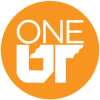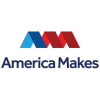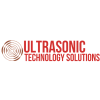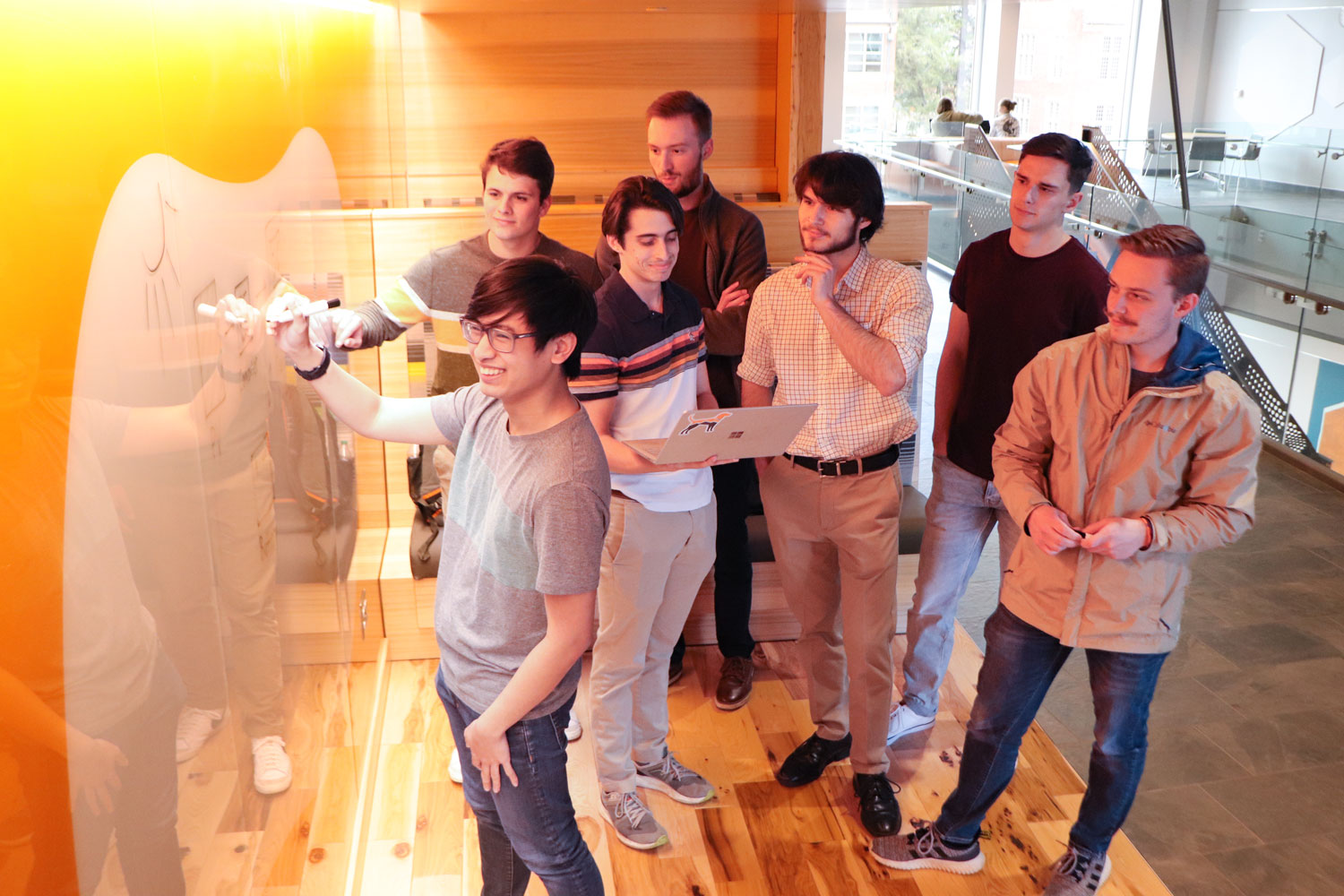By David Goddard. Photography by Randall Brown.
The Interdisciplinary Senior Design program was created to bring together seniors from the Tickle College of Engineering and Haslam College of Business to work on projects provided by real-world clients with demonstrated needs or tasks at hand.
“The idea is to place students from the two colleges in scenarios relevant to their degrees that they might encounter once they have graduated and entered the workforce, while giving prospective employers a chance to see what kind of employees the students might be,” said Keith Stanfill, the Edwards Assistant Dean and director of integrated engineering design.
One project, Glass from the Past—co-sponsored by the UT’s Office of Sustainability (with student green fee funds) and the UT Research Foundation—sought new ways to recycle glass and use it as a source material in 3D printing. The eventual goal is to use bottles collected through UT recycling efforts.
“The idea of doing something that helped with sustainability efforts while also filling a need economically was very appealing to our team,” said Elise Stepp, a mechanical engineering major. “We’re currently testing out the equipment and using modifications along the way to develop our final system.”
The other members of the team, coached by Professor of Mechanical, Aerospace, and Biomedical Engineering Chad Duty, were Thomas Anderson (supply chain management), Rachel Fisher (industrial engineering), Sabrina Iezzi (civil engineering), Ethan Tornstrom (mechanical engineering), Colby Warden (mechanical engineering), and Brayden White (accounting).
Helping the remote community of Nazarét, Panama, by designing a mini electrical grid to distribute power from a solar array and a small generator was the goal of the NEED team project, sponsored by Solea Water.
Members chose this project because the idea of directly helping people fulfill a need was hard to ignore.
The ability to impact lives, to make a difference in a humanitarian way, was too great to pass up. We’ve all learned project management, business, finance, electricity, power generation—just a lot of things that we wouldn’t have otherwise without the program bringing us all together.”
Under the coaching of Min H. Kao Professor of Electrical Engineering and Computer Science Leon Tolbert, the team included in addition to Henderson Wally Greathouse (computer engineering), Will Hunter (electrical engineering), Matthew McAmis (mechanical engineering), Jeremiah Pham (civil engineering), Harrison Shay (aerospace engineering), and Luke Tyler (finance).
For the U. Purpose team, the project hit closer to home.
Sponsored by UCOR, a cleanup contractor for the US Department of Energy, they were tasked with finding a way to safely deal with charcoal filters that had absorbed uranium hexafluoride gas formed in the years following the conclusion of Oak Ridge National Laboratory’s Molten Salt Reactor Experiment.
“The canisters were removed and placed in concrete casks, but that isn’t a permanent solution,” said nuclear engineering major Emma Houston. “We wanted to find a creative way to repurpose the uranium, so we are proposing a method that could make it useful as a medical isotope.”
In addition to Houston, the team’s members were Billy Drainas (chemical engineering), Caleb Noe (biomedical engineering), Danny Lawson (supply chain management), and Jack Yardley (finance and supply chain management). They were coached by Eastman Professor of Practice Sankar Raghavan in the Department of Chemical and Biomolecular Engineering.
The other participating teams, their faculty coaches, their sponsors, and their goals can be found below:
Mind Spark Bot:
F.R.E.D.—Friendly Robot to Ease Dementia

Sponsor: One UT
Faculty Coach: Xiaopeng Zhao
Team: Devin Wilkinson (Finance) Lila Poppell (Biomedical Engineering), Luis Gonzalez (Computer Engineering), Harshil Singapuri (Business Analytics), Kinley Koontz (Biomedical Engineering), Matthew Mohandiss (Computer Science), Georgia Channing (Computer Science)
Project: Design and fabricate a social robot that can interact with Alzheimer’s patients and provide companionship, play games, etc.
R/AD: Extending the Functionality of a Web Estimating Application through a Responsive Mobile Design

Sponsor: Trimble
Coach: Austin Henley and Amir Sadovnik
Team: Elijah Berberette (Computer Engineering), Haley Bratton (Supply Chain Management), Tucker Duncan (Accounting), Jack Hutchins (Computer Science), Holland Johnson (Computer Science), Shreyank Patel (Computer Science and Economics), Rus Refati (Computer Science)
Project: Leverage the responsive design built into Estimation MEP, which allows it to load and run on a tablet browser, to extend its functionality on a tablet platform.
Nailed It!: Roofing Nail Cleanup System

Sponsor: Daniel Hood Roofing Systems
Faculty Coach: Doug Aaron
Team: Nick Munsie (Biomedical Engineering), Skyler Stone (Supply Chain Management), Kay Howell (Industrial Engineering), Barrett Tilman (Mechanical Engineering), Dawson Smith (Electrical Engineering), David Carlton (Business Analytics).
Project: Design, build, and test a reliable, marketable solution for nail removal from landscaping following roof replacement.
Metal Tech Research: Metal Additive Manufacturing Parameter Selection for Maximum Utility

Sponsor: MTDG/America Makes
Faculty Coaches: Tony Schmitz and Suresh Babu
Team: Alexander Horton (Mechanical Engineering), Justin Ellis (Mechanical Engineering), Nick Brodeur (Mechanical Engineering), Nick Martin (Mechanical Engineering)
Project: Design, fabricate, and test a representative component using additive manufacturing with the recommended parameters.
Dry Pass Filter: Ultrasonic Transducer Amplifier Design for Low Noise

Sponsor: Ultrasonic Technology Solutions
Faculty Coach: Daniel Costinett
Team: Zach DeGuira (Electrical Engineering), Casey Mackinnon (Electrical Engineering), Stephen Monroe (Supply Chain Management), Robert Smith (Computer Engineering), Will Trout (Electrical Engineering)
Project: Design a robust H-bridge amplifier to drive up to 700 low-cost piezoelectric transducers used in an ultrasonic drying system.
